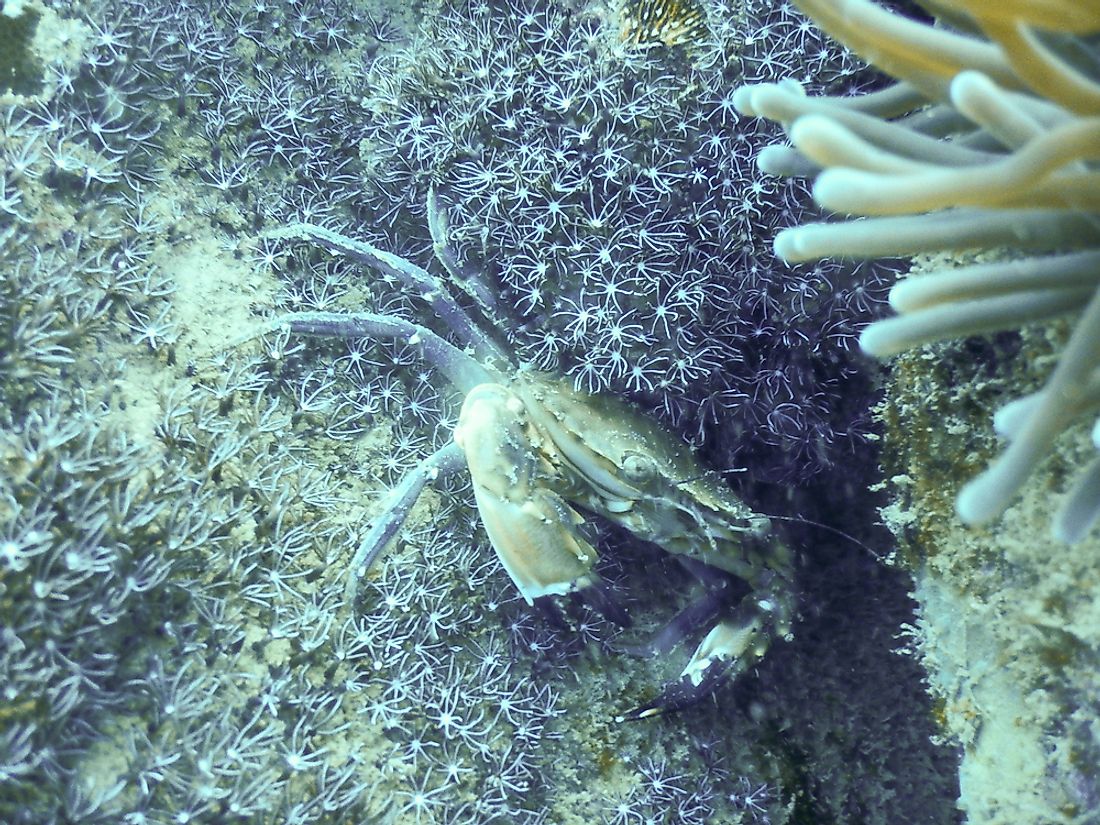Mud Crab Facts - Animals of the Oceans

Crabs are decapods crustaceans that live in the oceans, freshwater, and on land. Mud crabs are species of crabs that live mainly in the mud. Examples of mud crabs include Scylla serrata, Scylla tranquebarica, Scylla paramamosain, Panopeus herbstii, and the tunneling mud crab. Scylla tranquebarica is a mangrove mud crab common in mangrove areas of Taiwan and Pakistan while Scylla paramamosain makes a popular dish in Southeast Asia. Panopeus herbstii is a small mud crab that is mainly common along the Atlantic coast of North America. The tunneling mud crab, scientifically known as Helice crassa, is a large-eyed mud crab endemic to the sea coast of New Zealand.
Scylla Serrata
Scylla serrata, also referred to as black crab in some places, is a popular and economically important species of crab. It is commonly found in Africa’s estuaries and mangroves, Australia, and Asia.
Physical Description
Scylla serrata has a smooth carapace with strong traverse ridges. The carapace is often green to almost black in color. It has relatively broad frontal lobes that are almost in line with each other. The teeth are long and anterolateral, projecting obliquely outwards. The chelipeds or claws are robust and have several well-developed spines. The hind legs are flattened into swimming appendages. The mud crab is generally grayish green to purple-brown in color. The carapace and the hind legs have irregular white spots.
Diet
Scylla serrata is mainly a carnivore. It preys on small invertebrates such as crustacean, mollusks, and small quantities of plants. They also feed on shrimps, other crabs, and fish. During the molting period, the hard-shelled crabs may attack the molting ones and devour them. Scylla serrata forages mainly at night. The type of food taken by the mud crab is dependent on the habitat and the availability of food. The type of food taken by Scylla serrata in Africa varies from that in Asia or Australia. Also, there is a slight difference in the type of food taken by the crab at different growth stages.
Habitat and Range
The natural range of the black crab is the Indo-Pacific. It is common South Africa, around the coast of Indian Ocean. It is also found in the Malay Archipelago, and Southern Japan. Scylla serrata has also been introduced in Hawaii, Florida, and in other places to intentionally establish its population. The crab inhabits the muddy bottom of the mangrove marshes influenced by tidal waters. The female crabs bury in the mud while the male ones seek shelter in barrows. Most of the crabs become inactive in low temperatures. In fact, most of them record decreased movement and activities with the decreasing temperatures.
Reproduction
Scylla serrata becomes reproductively mature at approximately 90 mm carapace width, within the first year. During mating, the male crab will approach the female crab, grasping it with its chelipeds and carrying it around for several days until the female molts. After molting, the male turns the female around and begins the process of copulation. Spawning takes place five weeks after mating.











